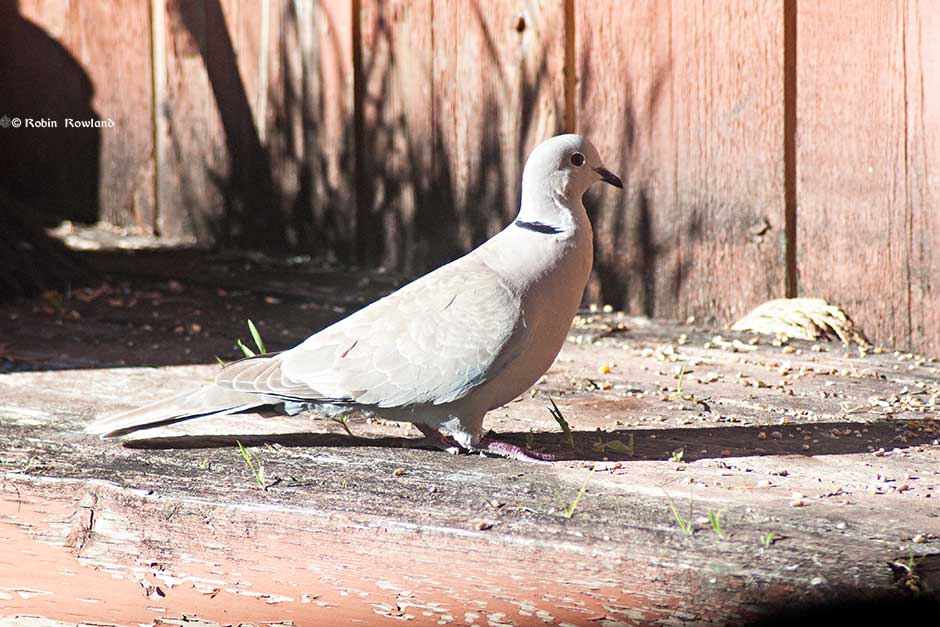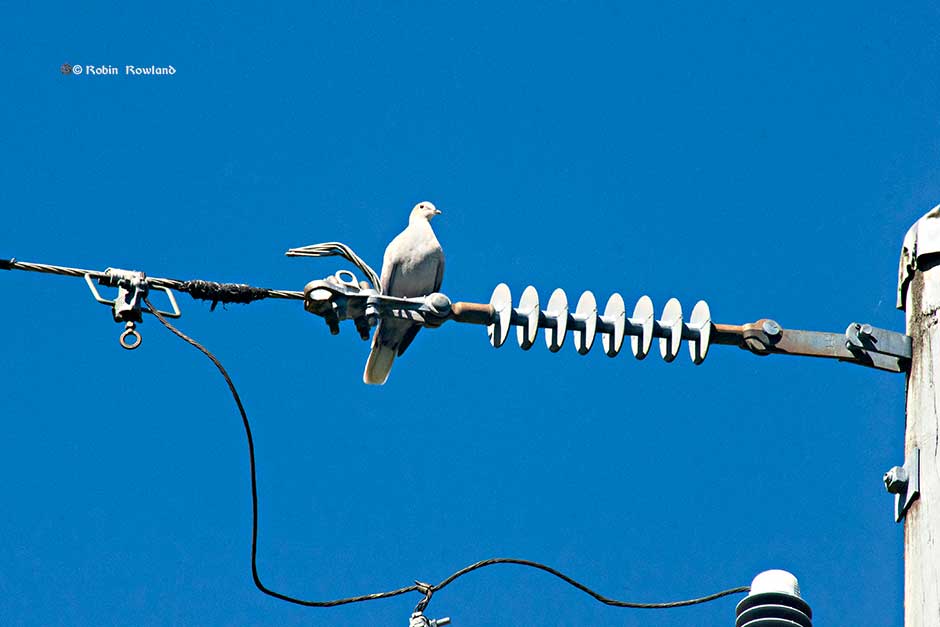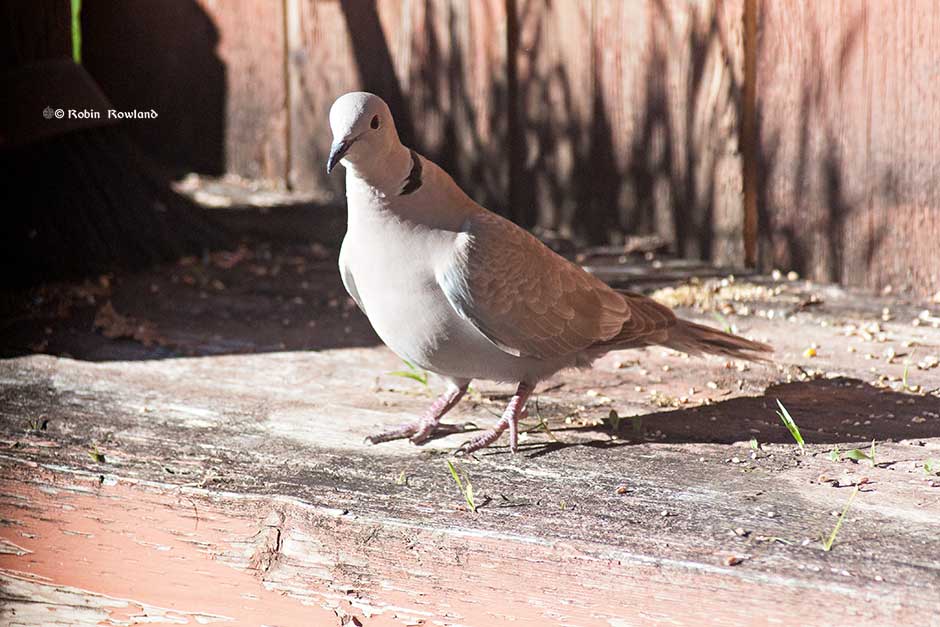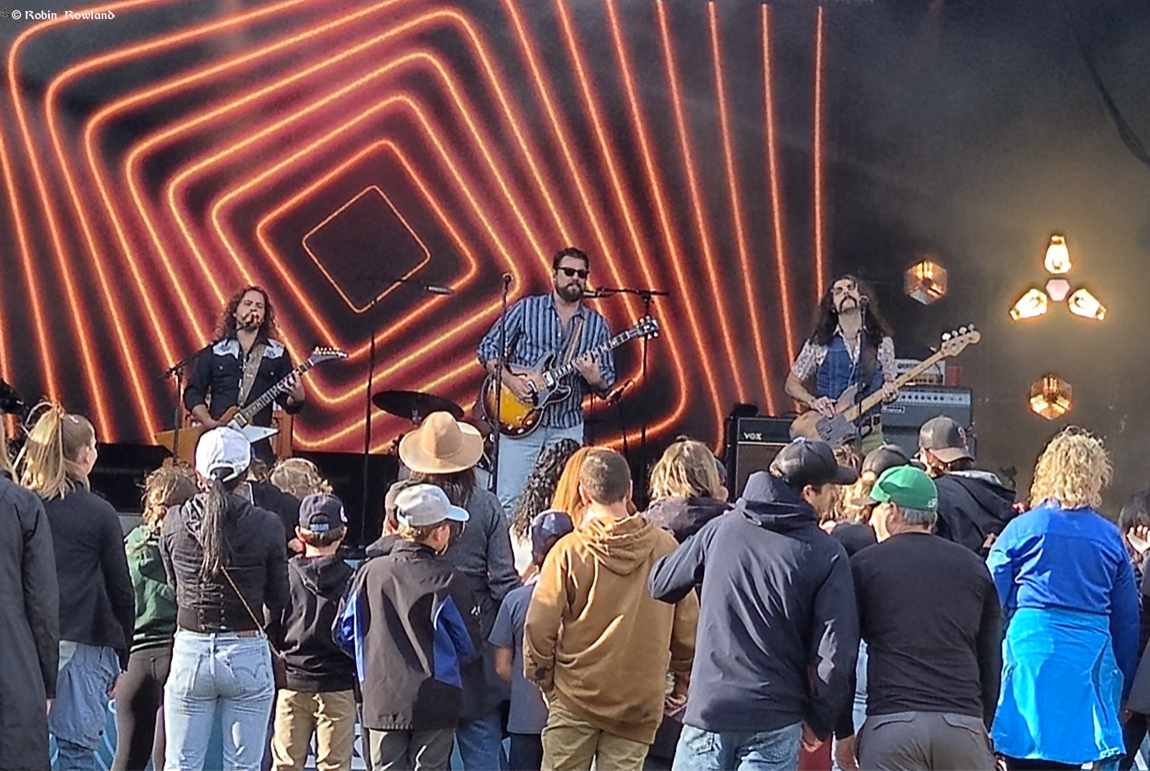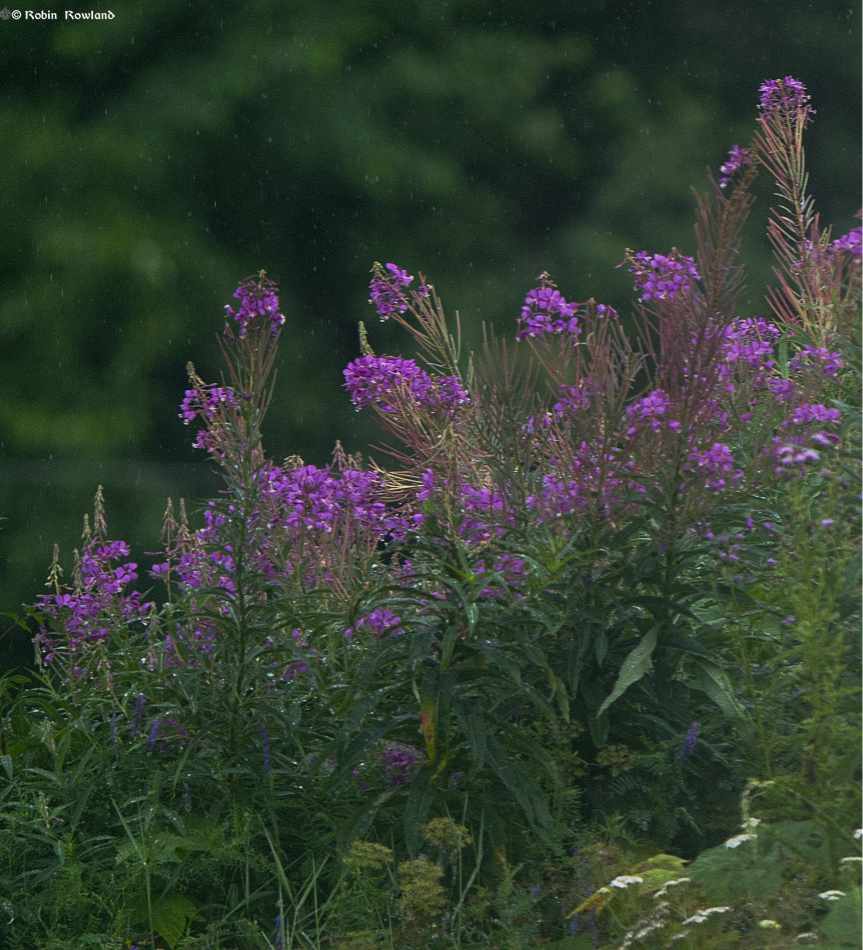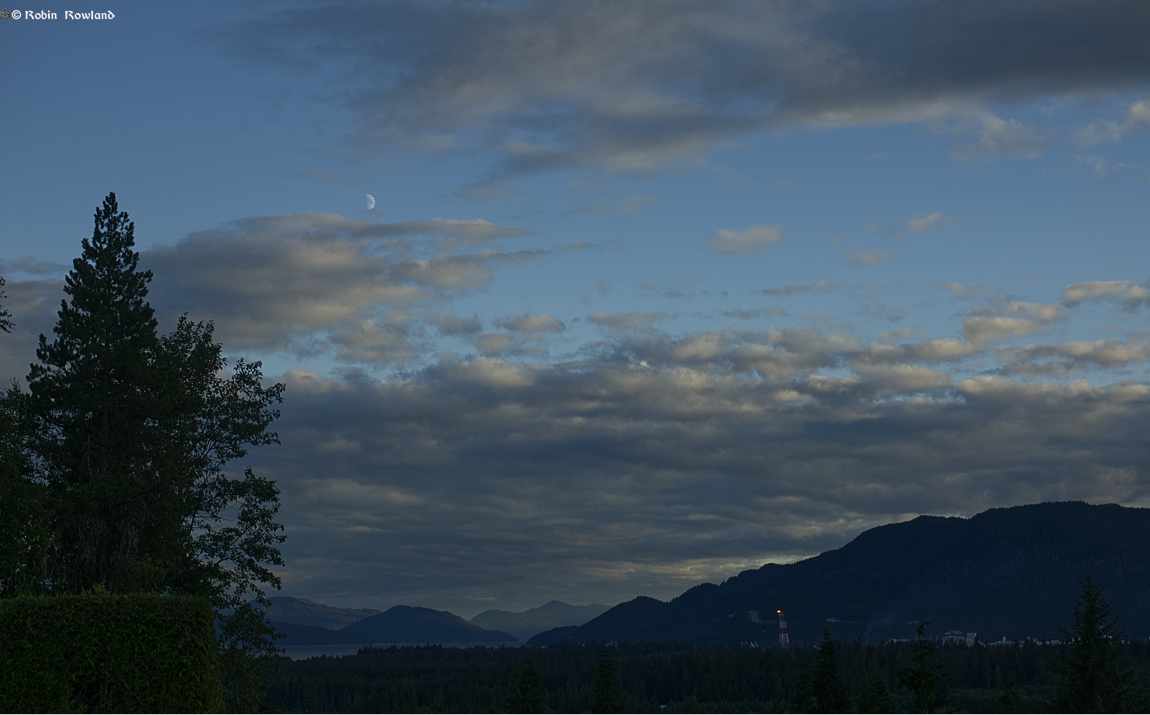A Eurasian collared dove hanging around my backyard
Here in Kitimat, you hear the “cooing” of doves more frequently these days.
The naturalists say the mourning dove (zenaida macroura)more common in southern British Columbia has been moving north, enticed by the changing climate. Other members of the family Columbidae that from time to time visit the Kitimat Valley are the band-tailed pigeon and most common pigeon of all, known as the rock pigeon or rock dove (Columba livia) even when it hangs out in city streets.
Since the spring a white dove has been active in my neighbourhood, but with it usually perched high on the power lines, I couldn’t be sure what it was until a couple of days ago when it finally landed on my deck, near my feeder.
The Eurasian collared dove on my deck. (Robin Rowland)
Clearly it’s a Eurasian collared dove (Streptopelia decaocto) which isn’t even listed in any of my British Columbia bird books but Kitimat residents say they have spotted the dove over the past two years. Wikipedia says the collared dove is native to “warm temperate and subtropical Asia from Turkey east to southern China and south through India to Sri Lanka” and began expanding its range across Europe and other parts of Asia in the early 20th century. The Eurasian collared dove has spread across China and into Japan.
According to Wikipedia a flock of Eurasian collared doves probably escaped from captivity in Nassau, the Bahamas in 1974 and arrived in North America proper in the 1980s with the first formal identification in Arkansas in 1989. The bird is now found all 48 contiguous US states. It appears to prefer the warmer climes of the more southern US states but with climate change it may be spreading further north.
The Eurasian collared dove prefers the same ecological niche as the mourning dove, which likely means that like the mourning dove, the Eurasian collared dove is moving north as the climate warms. UPDATE: The collared dove has appeared for some years after these images were taken and in other years there are none. I did not notice any in 2023. (Locals say the collared dove is a tasty meal for bald eagles)
This is how I usually saw the dove, high on the power lines. (Robin Rowland)
